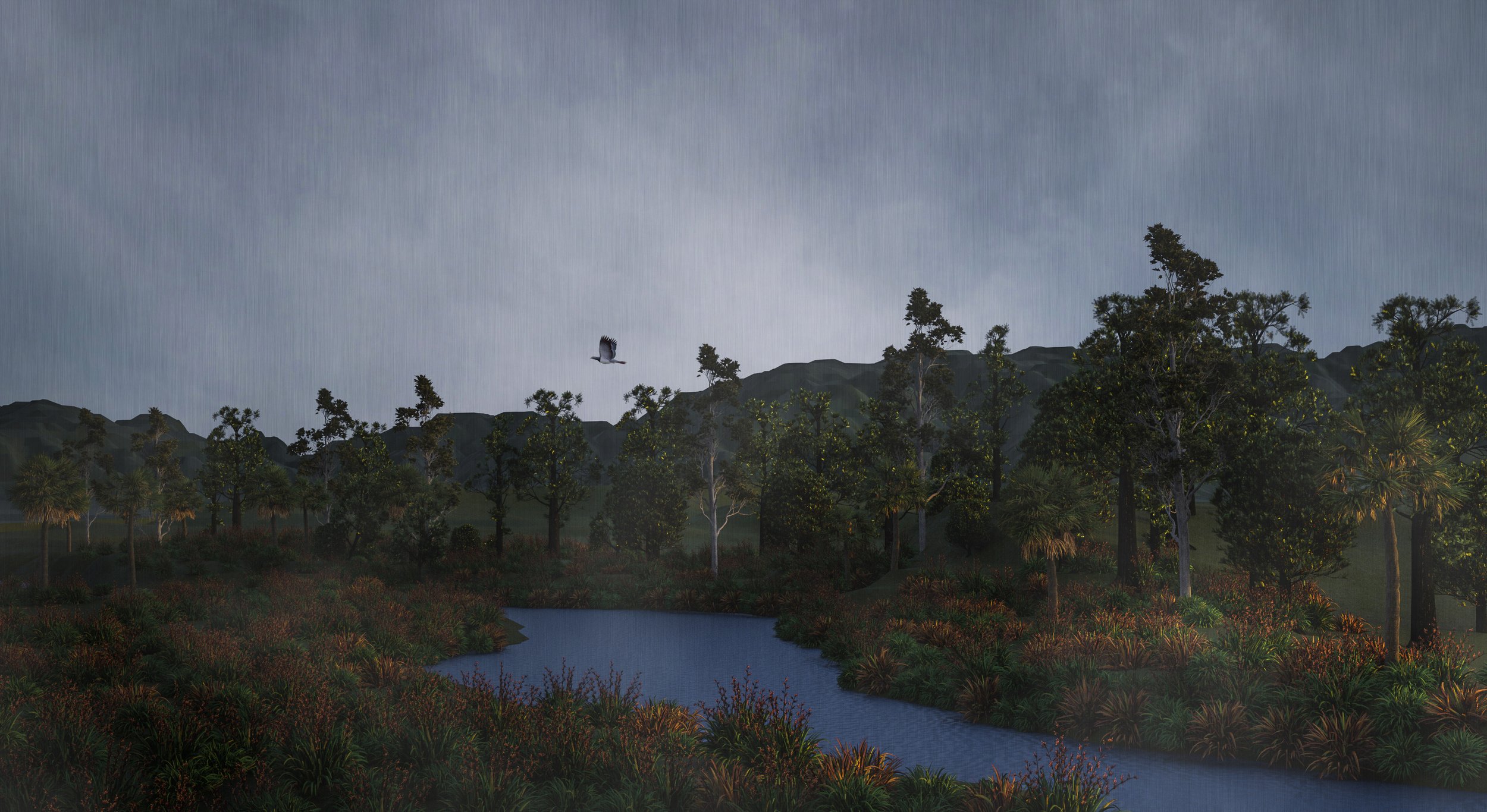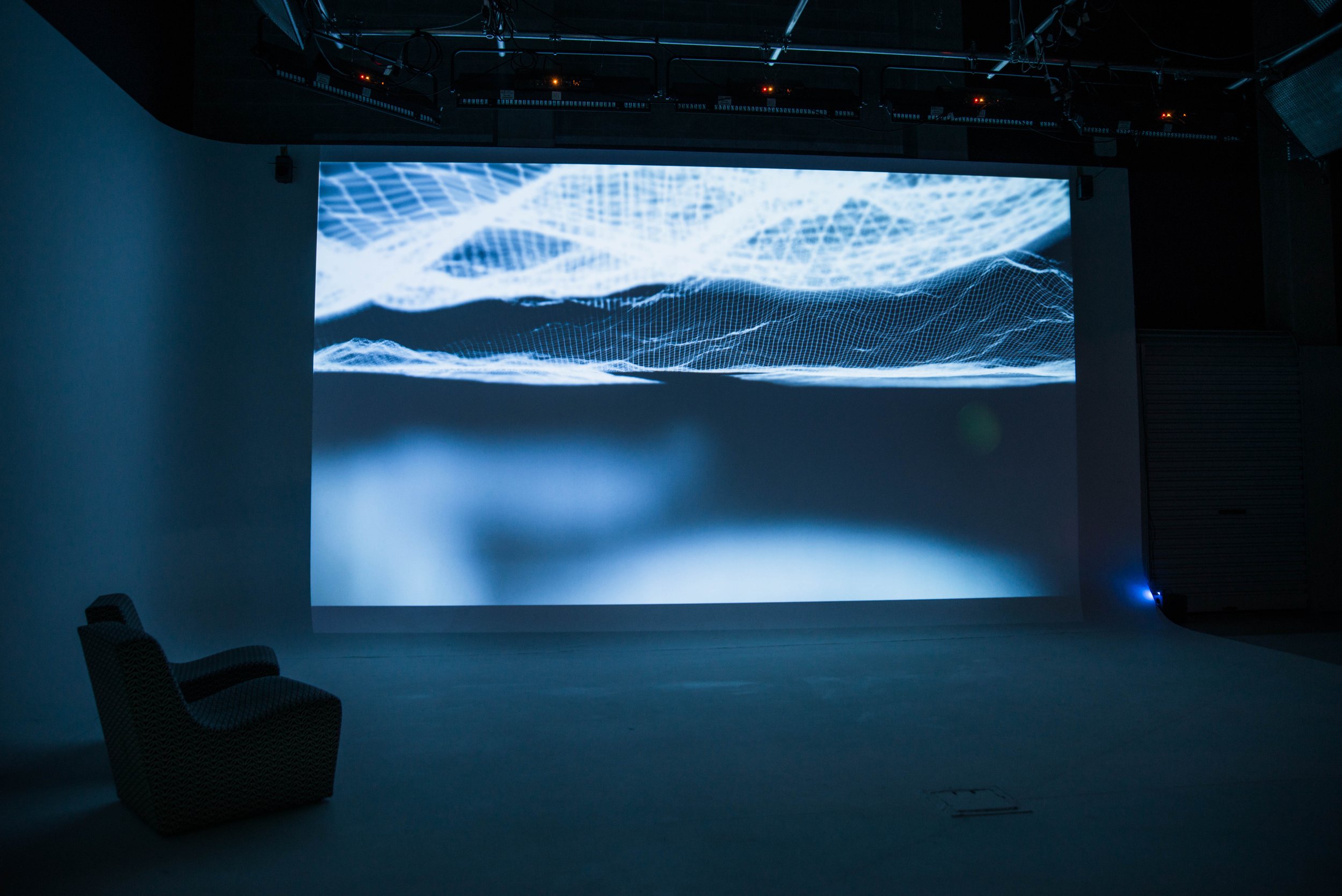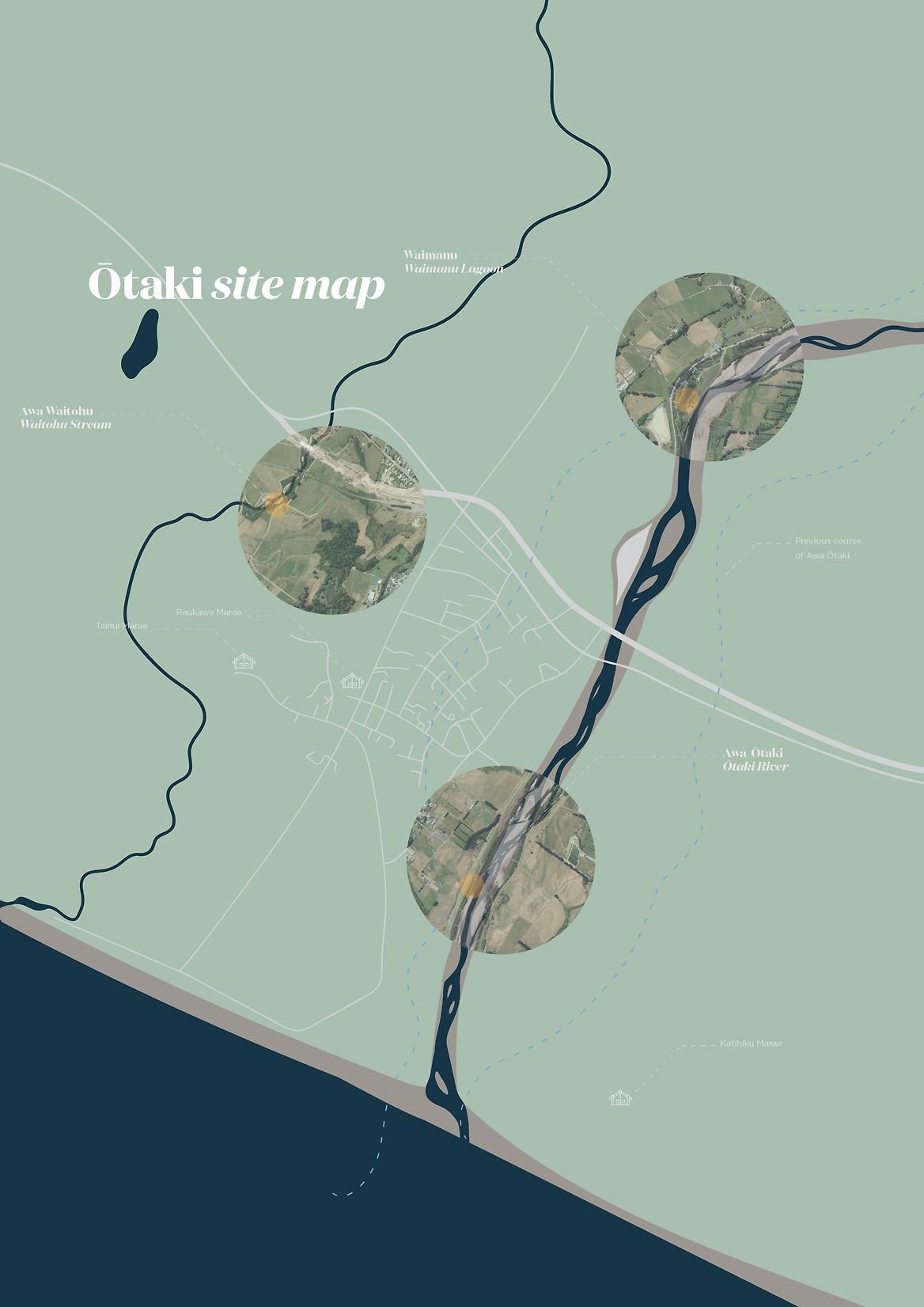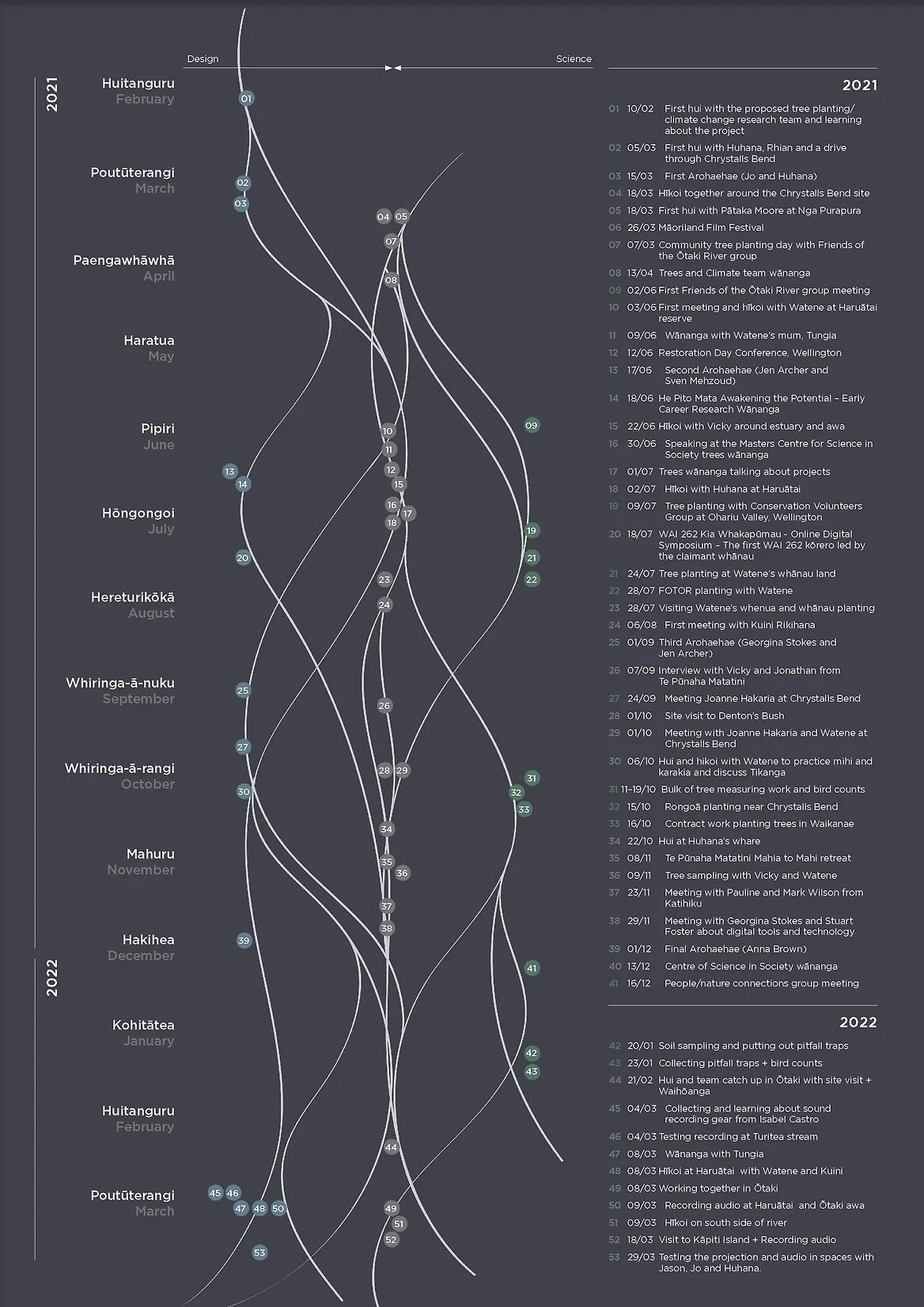
Whakapapa o te ngāhere
Whakapapa o te ngāhere is an explorative discussion and process of understanding ecological and cultural fragmentation through kōrero, hīkoi and spatial design. How can Spatial Design be used to reveal embedded narratives and activate conversations, while revealing the importance of conserving and reconnecting ngāhere through a Te Ao Māori lens?
Over the young colonial history of Aotearoa, rapid deforestation, land alienation and land alteration has significantly changed the whenua (land) and the relationship between tāngata (people), rākau (plants and trees) and the ngāhere (forest) that once cloaked Māori lands. Through a cross-institutional and interdisciplinary collaboration between Te Herenga Waka Centre for Science in Society and Toi Rauwhārangi College of Creative Arts, this project expands ways of communicating the embedded values and relationships between native rākau, tāngata and whenua within the rohe (region) of Ngāti Raukawa ki te Tonga, Ōtaki. Guided by the overarching principle of whakapapa we acknowledge that this relationship extends beyond rākau to the pre-colonial whenua, dominant with puna wai Māori (freshwater systems) and kōreporepo ngāhere (swamp forest). Out of the process of centering whanaungatanga, hīkoi and kōrero of past and future visions arose the spatial design themes of 3D visualisation, immersion and experience. These forms have come together through an installation that will guide people through an immersive visual karakia that expresses whakapapa and mauri, preceding a series of visualisations that represent three familiar sites within Ōtaki that connect wai and rākau. The purpose is to evoke people to whakarongo (listen and feel) and kōrero (discuss).
RESEARCH QUESTION
How can spatial design be used to reveal embedded narratives and activate conversations, while revealing the importance of conserving and reconnecting ngahere through a Te Ao Maori lens?
Whakapapa
Whakapapa translates to ‘lay flat’. In the context of this project its meaning spans from a framework of understanding identity, genealogy, layers and interconnections.
Ngāhere
Ngāhere refers to both the forest and the many binding connections within.





















